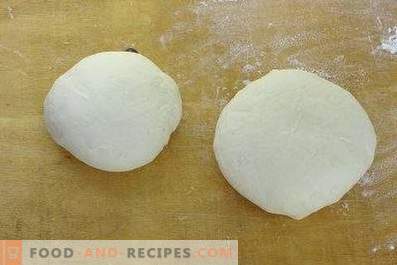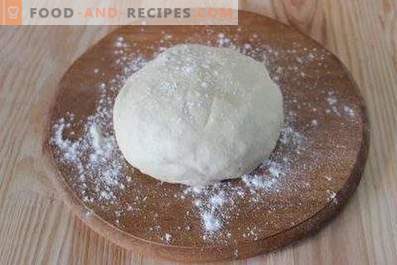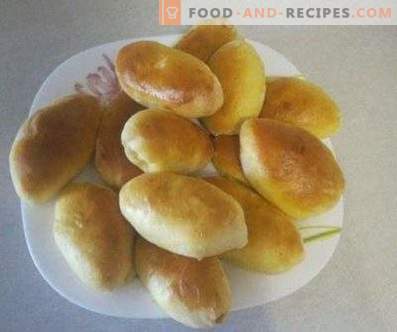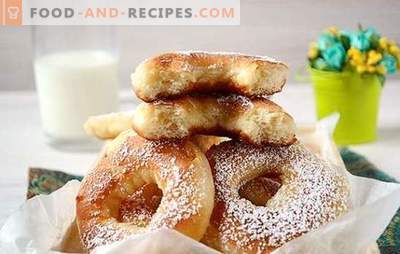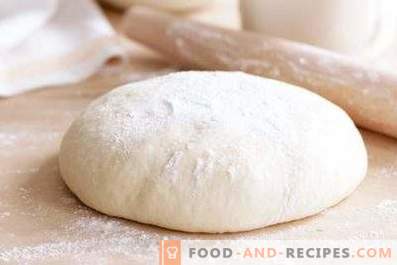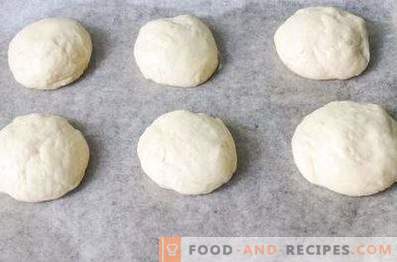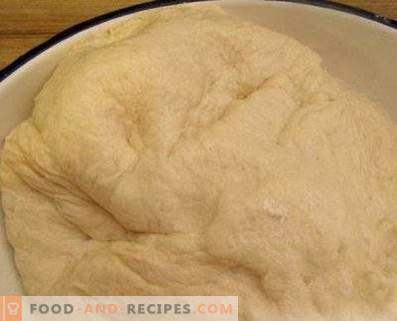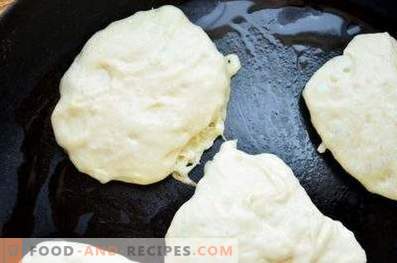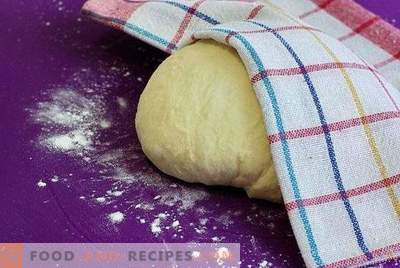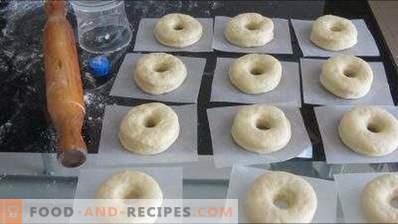
It’s hard to find someone who wouldn’t like donuts. This food is difficult to call useful, but it is difficult to resist. Cooking this dessert at home is a good idea, since homemade donuts are less harmful than those bought at street eateries, where they are often fried in stale butter. Traditionally, these products are made from yeast dough, which is why they are made so lush and airy. Yeast dough for donuts can be kneaded on water, milk, kefir, sour cream, using dry or pressed yeast, with or without eggs. Each hostess will be able to find an option for the soul.
Cooking Features
Yeast dough for donuts is prepared for quite a long time, and this process has many subtleties. Having broken the technology, the hostess will only translate the products. But she will avoid mistakes and get the expected result even if she doesn’t have much culinary experience.
- Flour for donuts is better to take the highest grade. From low-quality they turn out to be grayish inside, it is also possible that there is an unpleasant taste.
- Sifting flour before kneading dough is a necessary manipulation. It allows not only to get rid of small litter and insect larvae in the flour, but also to saturate it with oxygen. Sifted flour becomes loose, easily combines with other products, without forming lumps. Then the dough rises better, baking from sifted flour turns out to be more airy than from wholemeal.
- To activate the yeast they are mixed with warm water and sugar. The water temperature should be at least 30 degrees and not more than 40. In a cold environment, yeast will not work. In hot water, they “cook”, having lost their ability, feeding on glucose, to form carbon dioxide, the bubbles of which raise the dough. The fact that yeast has earned, indicates the appearance on the surface of water or milk froth cap.
- In order to raise the dough, it is placed in a high, but not wide capacity, covered with a cloth, put in a warm place and wait 1-2 hours until the dough increases in volume 2-2, 5 times. Then it is crushed, waiting for re-raising and proceed to the preparation of donuts. While raising the dough, it cannot be moved from place to place, it must be protected from drafts.
Donuts are made from the finished dough and fried or deep-fried or baked in the oven. For fried donuts, the dough is usually made slightly thinner and softer than for baked ones.
Yeast dough for donuts in milk with live yeast
Composition:
- wheat flour - 0, 6-0, 7 kg;
- pressed yeast - 50 g;
- egg yolks - 3 pcs .;
- chicken egg - 2 pcs .;
- milk - 0, 25 l;
- margarine or butter - 100 g;
- sugar - 100 g;
- salt - 2 g.
Method of preparation:
- Heat the milk to about 37-39 degrees, crumble the yeast into it, add a tablespoon of sugar. Stir to dissolve sugar and yeast. Wait 10-15 minutes until the milk is covered with a froth.
- Break eggs into a clean bowl, add egg yolks to them. Put salt to the eggs and whisk them with a whisk.
- Finely chop the margarine, put in a small saucepan and melt over low heat, preventing it from boiling. Some housewives prefer to melt the margarine in the microwave.
- Allow the margarine to cool slightly, pour it into a container with sourdough, send the egg mass to the same place. Mix well.
- Add sugar, stir again.
- Sift flour. Pour it into a liquid base and stir with a spoon until the dough begins to lag behind.
- Remember the dough a bit with your hands, put it in a saucepan, cover with a wet towel and put in a warm place. Wait for the dough to double. It may take a lot of time, as there is a lot of muffin in the dough, which makes it heavier.
- After raising the test, crush it, wait for the re-raising (it will take less time). Rinse the dough again and start cooking donuts.
According to this recipe, you can prepare unsweetened donuts, which will be a good addition to borsch, especially if you smear them with garlic butter. For the preparation of unsweetened donuts, sugar should be taken twice as less, and salt — twice as much.
Yeast dough for donuts on water with dry yeast
Composition:
- flour - 0, 6-0, 7 kg;
- dry high-speed yeast - 10-11 g;
- sugar - 40 g;
- salt - 2 g;
- warm water - 0, 35 l;
- refined vegetable oil - 120 ml;
- vanillin (optional) - 1 g.
Method of preparation:
- Sift flour in the amount of 0, 6 kg and mix it with salt, sugar and dry yeast. If you plan to put vanillin in the dough, also mix it with flour.
- Heat the water to about 40 degrees, mix it with vegetable oil.
- In the flour, make a hole, pour water mixed with oil into it. Stir with a spatula.
- Continue kneading the dough until it stops sticking to it. If necessary, you can pour more flour.
- Form a ball from the dough, put it in the pan and wait until it rises. It will happen no later than 40 minutes.
- Puddle dough and start cooking donuts.
Donuts from this test can be eaten in the post. Another advantage of the recipe is the quick preparation of yeast dough on it.
Yeast dough for donuts on kefir
Composition:
- wheat flour - 0, 3 kg;
- pressed yeast - 20 g (or 7 g dry);
- egg yolk - 1 pc .;
- kefir - 120 ml;
- sugar - 120 g;
- margarine - 50 g;
- salt - a pinch;
- vanillin - at the tip of the knife.
Method of preparation:
- Heat the kefir in a water bath. It is enough that it reaches a temperature of 30-35 degrees. It is impossible to heat fermented milk product strongly, as it can be divided into cottage cheese and whey.
- Pour the kefir in a bowl, add the mashed yeast, salt and a spoonful of sugar. Wait for a while until foam comes out on the yogurt.
- Melt the margarine, let it cool.
- Separate the yolk from the protein.
- Combine yolk and margarine with kefir starter, add the remaining sugar into it. Whisk the mixture with a whisk.
- Gradually pouring the sifted flour to the liquid mixture, knead the soft, but not sticky dough.
- Place the dough in a warm place and wait until it doubles.
- Puddle the dough, wait for the re-raising and proceed to cooking the donuts.
Dough raising time depends on the type and quality of yeast used.
Yeast dough for donuts can be cooked on milk, water, kefir. All options have their advantages. The choice depends on the preferences of the culinary specialist and the availability of certain products in the kitchen.
